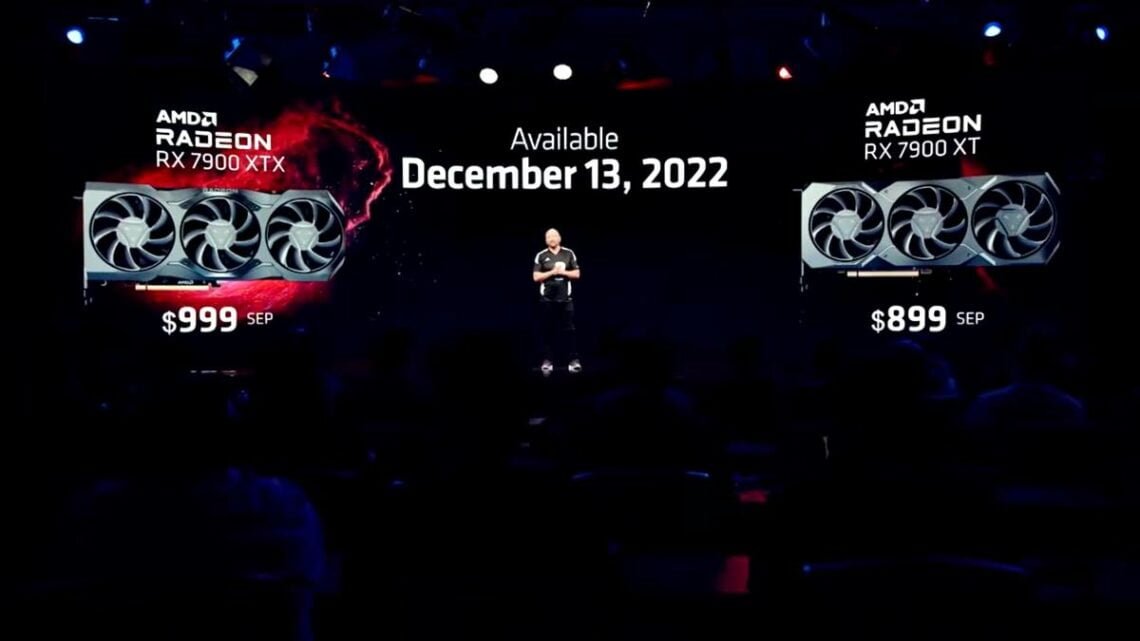AMD has announced the Radeon 7900 XTX and Radeon 7900 XT, its first two GPUs based on the new RDNA 3 architecture, at its RDNA 3 Tech Even in Las Vegas and the company’s timing is perfect since everyone seems to be looking towards AMD after NVIDIA’s debacle with the launch of its RTX 4090.
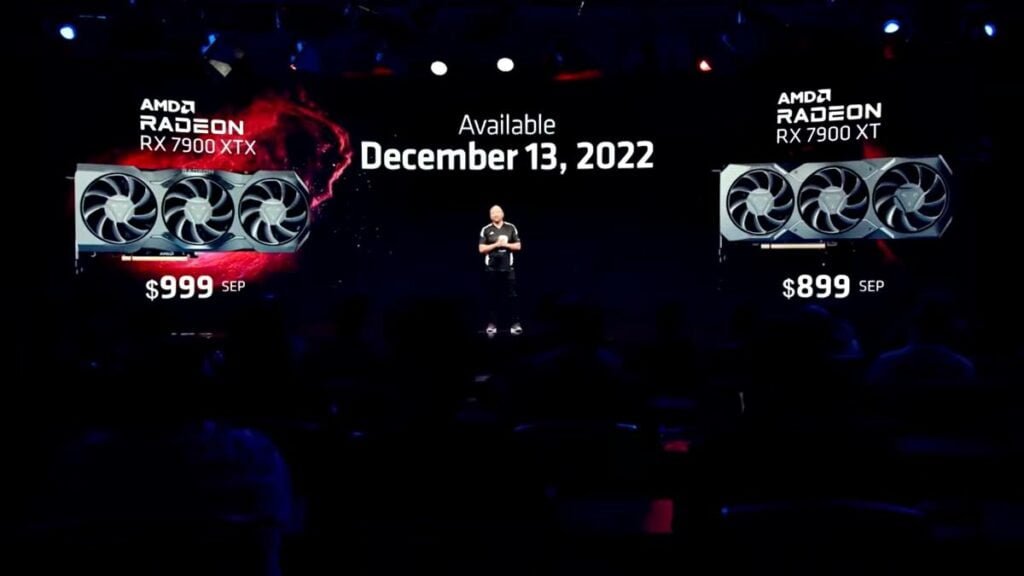
During the event in Las Vegas, AMD’s CEO Dr. Lisa Su claimed the new hardware offered a 54 percent increase in the performance per watt over previous GPUs and AMD is focused on delivering complex performance with a reasonable power usage, which is clearly a knock against NVIDIA’s new RTX 4000 series that seems to be melting its power connectors.
Furthermore, AMD has also gained advantage over NVIDIA in terms of pricing as it announced that Radeon RX 7900 XTX will sell for $999, while the RX 7900 XT will go for $100 cheaper at $899, which is far more reasonable than RTX 4090’s $1,599 and RTX 4080’s $1,199 price tag, with both cards available for purchase on December 13th.
Lisa Su continued that RDNA 3 is the world’s first chiplet-based GPU that gives it a modular design that can be easily tweaked down the line. Currently, those chiplets include a 5nm GPU compute die and a 6nm memory cache, while being capable of reaching up to 61 teraflops of computing power (up from a maximum of 23TFLOPS on the RDNA 2 architecture) and they can manage up to 24GB of GDDR6 memory and consists of 58 billion transistors.
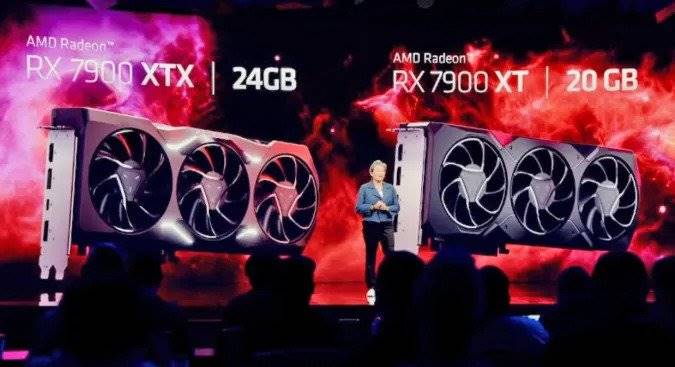
Radeon RX 7900 XTX
The AMD Radeon RX 7900 XT will features 96 CUs (compute units), 24 GB of 20 Gbps GDDR6 RAM on a 384-bit bus, a 2.3 GHz game clock, DP 2.1 support and a TGP of just 355 Watts. Furthermore, the GPU still relies on the old 8-pin PCI-e power cables, eliminating the need for those dodgy 12VHPWR adapters that are plaguing the RTX 4090.
AMD says that Radeon RX 7900 XT delivers up to 54% increase in performance/watt compared to the previous generation, while being 1.7 times faster than the Radeon RX 6950 XT at 4K in select titles. However, the raytracing performance isn’t very impressive since the GPU manages to push over 0 FPS in titles such as Cyberpunk 2077 and Dying Light 2, at least with FidelityFX™ Super Resolution (FSR) enabled.
Moreover, the GPU also supports AV1 encode and decode functionality.
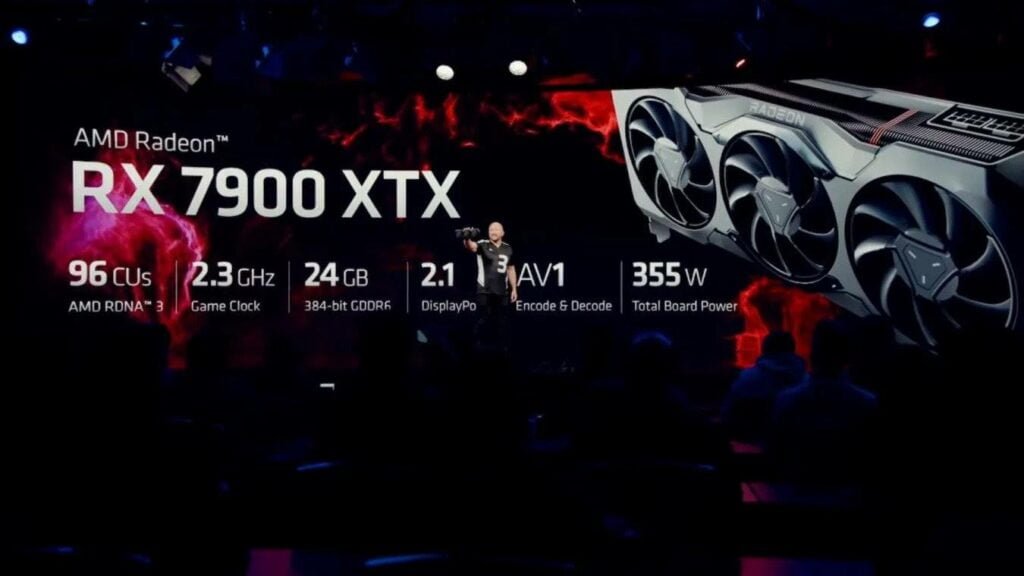
As mentioned above, the price of the Radeon RX 7900 XTX will is just $999 and the GPU will be available starting December 13th. However, it is still too early to tell whether the RX 7900 XTX will dethrone Nvidia’s 4090 until we get the first set of proper benchmarks of the GPU.
Radeon RX 7900XT
AMD also unveiled the Radeon RX 7900 XT that uses the same Navi 31 GPU as its higher-end counterpart but a cut in CUs to 84 (from 96) and TGP of 300 Watts. Furthermore, the GPU’s base/boost clock is set at 1.5/2.4Ghz and it features 20GB of 20Gbps video memory on a 320-bit bus and an 80MB of infinity cache. Meanwhile, some other features include support for DP 2.1 and AV1 encode and decode.
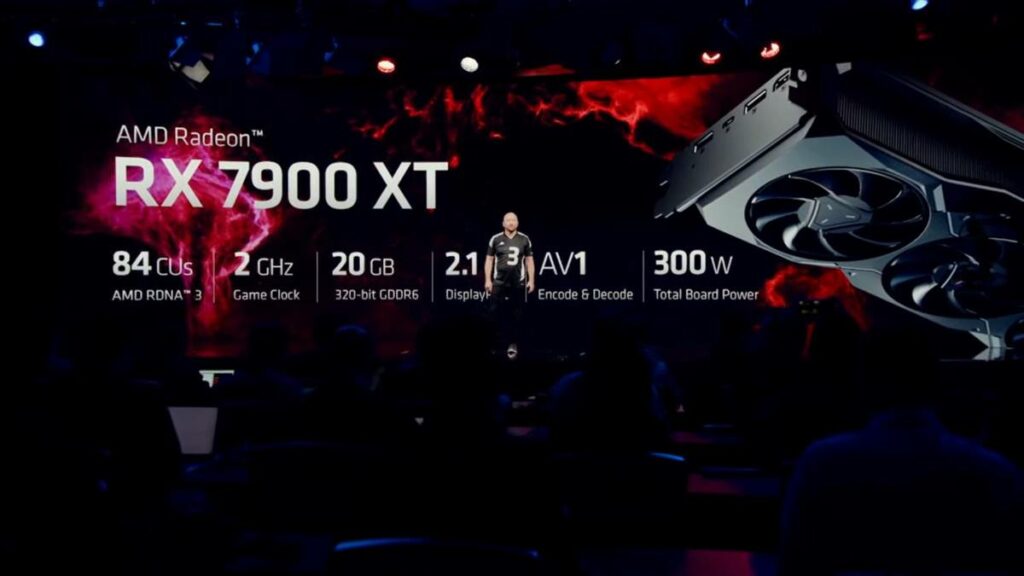
Unfortunately, AMD did not specify how the Radeon RX 7900 XT compares to its predecessor and we will need to wait for proper benchmarks to see that for ourselves. However, the company did reveal the price of the Radeon RX 7900 XT, which is $899 and a lot cheaper than Nvidia’s RTX 4080 at $1,199.
What do you think of the AMD Radeon RX 7900 XTX and Radeon RX 7900 XT? Let us know the comments below.
Read more: Intel Arc A770 Desktop GPU Finally Gets a Price and Launch Date.
